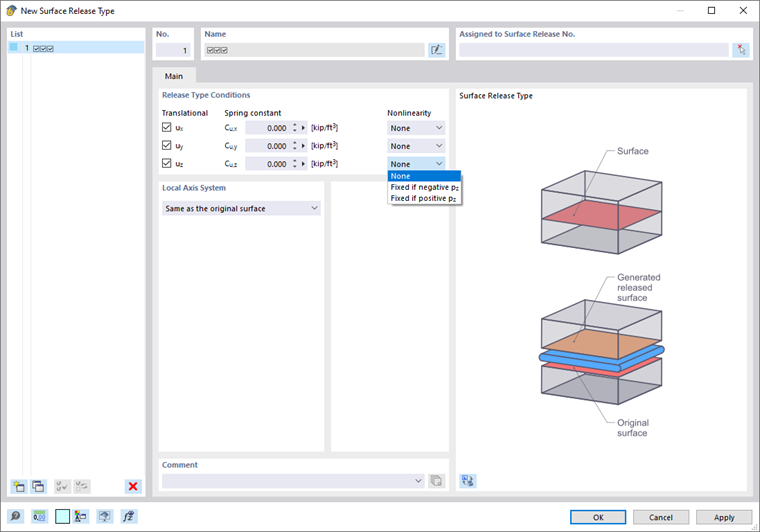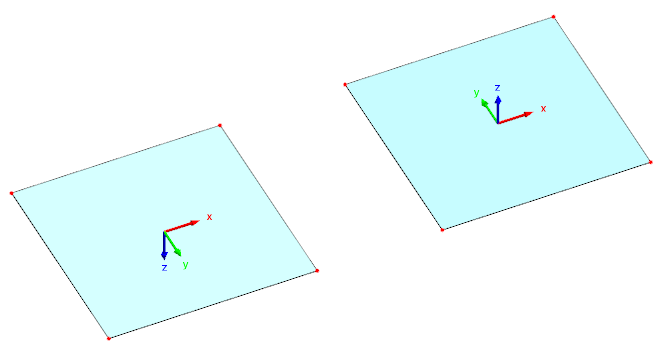For each surface release, it is necessary to specify the properties that control the transfer of displacements (and thus of internal forces and moments) between the original surface and its copy. This surface release type describes the properties of the hinge on the invisible connecting members between the FE nodes of the two surfaces.
Release Type Conditions
You can define the release conditions for three "Translational" degrees of freedom. The displacements ux and uy describe the hinge conditions in the surface plane; the displacement uz describes them perpendicular to the surface. Thus, the directions of the displacements refer to the axis system of the surface.
To define a release, select the check box for the respective axis. The check mark indicates that the displacement of the object in the corresponding direction is possible. The constant of the translational spring is then set to zero. You can adjust the "Spring constant" anytime in order to model an elastic hinge. Enter the spring stiffnesses as design values.
In the "Nonlinearity" column, you can control the release for each direction of the displacement. Currently, the list of nonlinearities only offers the criterion for positive or negative forces (see the image Dialog Box "New Surface Release Type").
Local Axis System
In the list, select the xyz-axis system to which the releases refer:
- Same as the original surface
- Reversed to the original surface
This allows you to influence the position of the local surface axes. If you align the axes in reverse to the original surface, not only will the z-axis be reversed, but also the direction of the axes in the surface plane.

